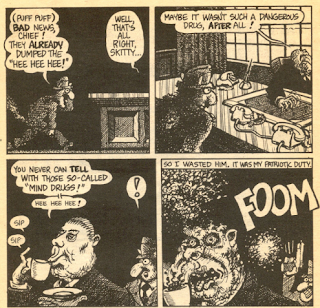The Balancing Act of the Newspaper Comic
The art of the comic strip is a fickle and difficult one. Although it is considered rather "low art," there's a special kind of respect we should afford it. It's a fluid art form that evolves throughout years--decades--into something with a continuing canon and solid, identifiable, and iconic art style. Very few comics get such wide spread and mass exposure as the comic strip while simultaneously getting only seconds to get their point across.
There's also the ability to evolve art style and ability in front of an audience. The weekly or even daily comic strip exists as an almost disposable art to the public casual viewer (at least until it's put into a publication in book form) and this gives the artist the ability to continuously improve and change designs within reason. It has it's drawbacks, as any medium does, where schedules are incredibly unforgiving and limited, leaving very little room for ambitious design or overcomplicated script. It's a medium of contradictions that can be both incredibly freeing, and also horribly restricting.
You can see examples of this in the first volume of Peanuts by Charles Shultz. In his early renditions of the comics, you can see his limited ability and nearly blank backgrounds, but as he evolves and grows and begins to be able to draw more efficiently, he employs more use of gesture, posture, background and shading.
There's also the ability to evolve art style and ability in front of an audience. The weekly or even daily comic strip exists as an almost disposable art to the public casual viewer (at least until it's put into a publication in book form) and this gives the artist the ability to continuously improve and change designs within reason. It has it's drawbacks, as any medium does, where schedules are incredibly unforgiving and limited, leaving very little room for ambitious design or overcomplicated script. It's a medium of contradictions that can be both incredibly freeing, and also horribly restricting.
You can see examples of this in the first volume of Peanuts by Charles Shultz. In his early renditions of the comics, you can see his limited ability and nearly blank backgrounds, but as he evolves and grows and begins to be able to draw more efficiently, he employs more use of gesture, posture, background and shading.




Comments
Post a Comment